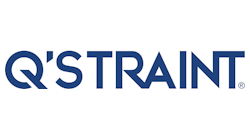Did you know that one of the leading problems among organizations is a lack of communication between employees and management? Fortunately, there are ways of combating this pandemic. Some companies have even mastered the art of communication. Here are effective techniques for building strong internal communication within your organization.
Encourage employees to interact with one another, both horizontally and vertically. Managers should lead by example, regularly sharing ideas and dialogue, while also being receptive to feedback. Open door policies tend to promote positive communication habits among employees, especially on a multi-level basis.
It’s no secret that employees want to feel appreciated. Taking time to remind employees that their contributions and ideas are valued will rarely go unnoticed. This empowers them not only to work harder, but to feel more comfortable communicating with managers and high-level executives. Utilizing suggestion boxes and surveys provides a less formal and more discrete outlet for idea sharing. Often times, timid employees are more likely to respond to these methods. This empowerment builds confidence, allowing them to be more open with managers – and sometimes this is how the best ideas are born.
Enable employees by providing the proper tools. Trade in traditional meetings for new online tools that facilitate more efficient reporting, team updates and project management. There are tons of great online tools that allow employees to do everything from instant message to web conference. Good old fashioned emails and newsletters are great for sharing companywide information as well.
Transparency is immensely powerful in fostering strong communication and creating a sense of unity among employees. It builds trust between leaders and their counterparts, allowing relationships to grow authentically, while simultaneously avoiding potential miscommunications. Conveying a clear vision with defined goals, expectations and roles puts all team members on a level playing field. These objectives should be laid out for new employees and regularly reiterated to existing employees. This can easily be accomplished through the establishment of processes.
Established processes support a streamlined work environment. Implement a communication structure, whether it be daily, weekly or monthly, for how employees should interact regarding key initiatives. This can be through daily protocols, weekly meetings or monthly reporting. Confusion can often be avoided when all team members are aware of each other’s roles and current task lists. This understanding allows team members to be more empathetic towards one another and strategically plan projects based on each employee’s workload.
It’s always nice for employees to get together in a social environment outside of the workplace. Happy hours and group lunches are a good start. This allows employees to bond on a more personal level in a more casual setting. Developing a deeper level of comfort between peers typically promotes honest and productive communication practices in the workplace.
The ability to effectively listen is perhaps the most vital component of communication in any setting, especially in building strong communication within an organization. John Wooden said it best, “Listen if you want to be heard.”




